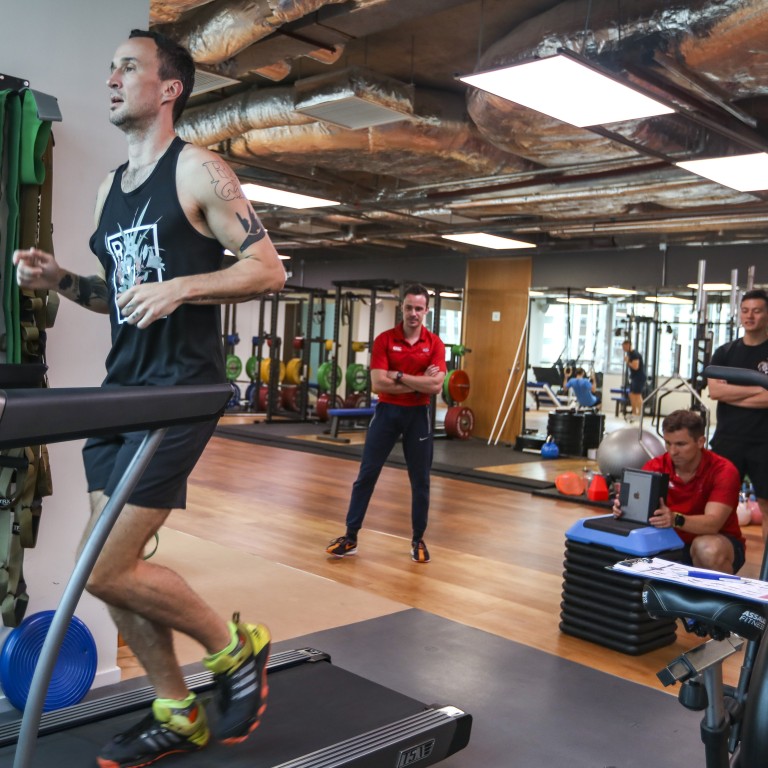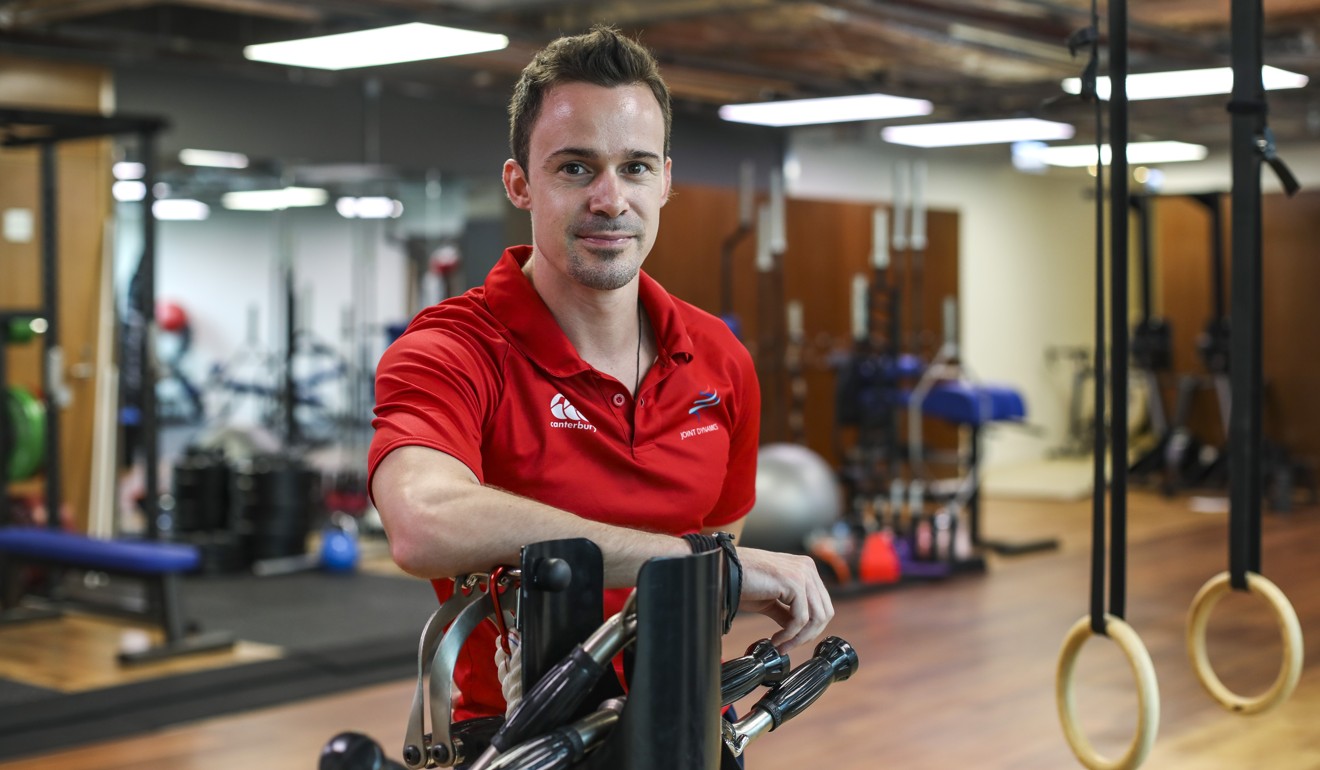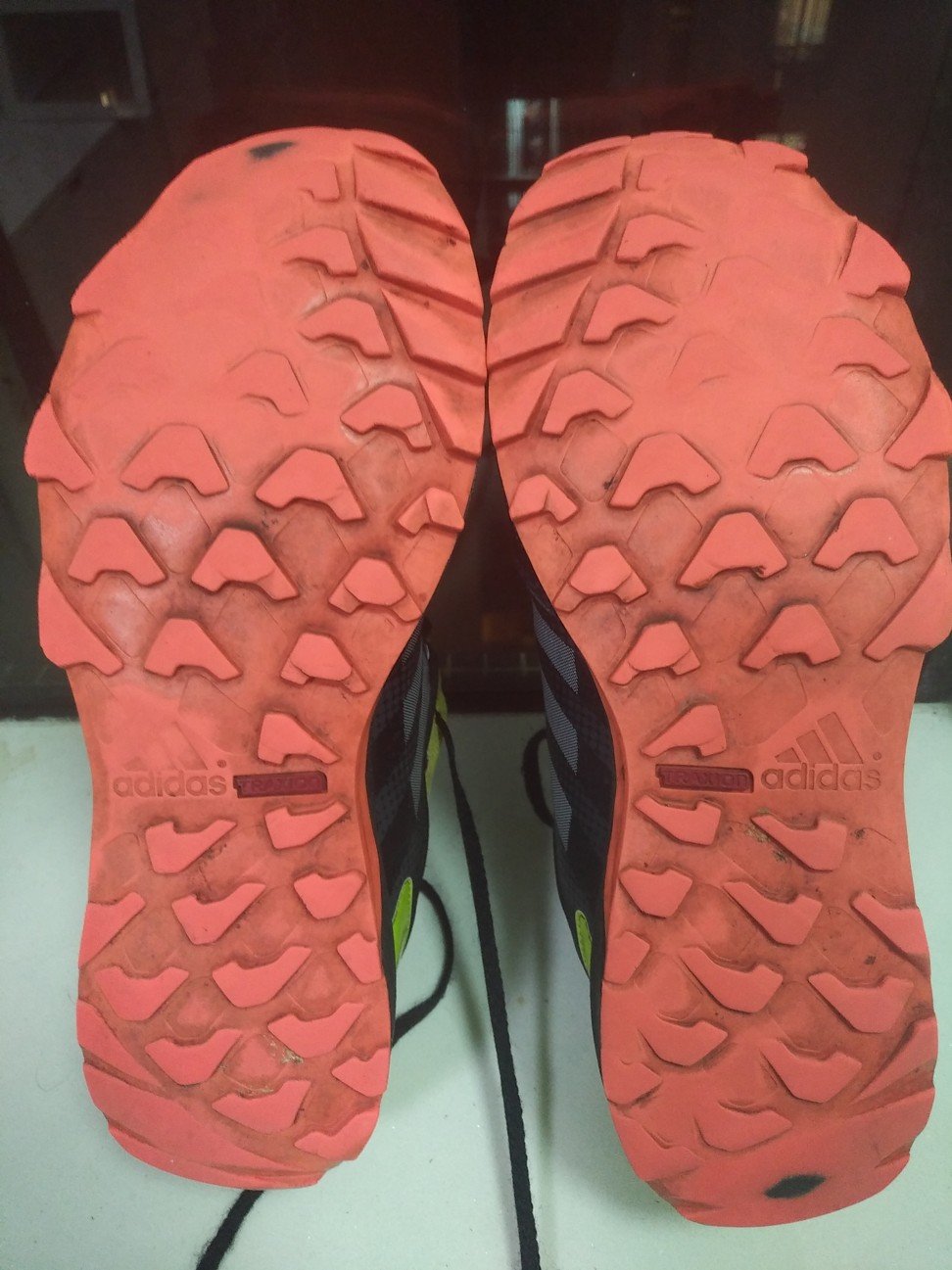
After feeling like a man on the run, suddenly it clicks into gear: Learning how to stride like an elite athlete with Gait analysis
- SCMP reporter Patrick Blennerhassett heads to a physiotherapy clinic for movement and gait analysis mapping
- Years of right-dominated sports forces his body to compensate, which can be fixed through training
While it’s not a technical term, David Jacquier is pretty accurate in summing up my stride.
“You run odd,” said Jacquier, director of physiotherapy clinic Joint Dynamics and its executive health and run coach. “Good thing is, we can fix a lot of these things. There’s always room for improvement, which is encouraging.”
The 3DMAPS, which comes from the Gray Institute, is a six-movement chart in which you twist and turn your body in various positions to gauge your range of motions. The idea is an analysis of movement patterns to identify any asymmetries in terms of mobility and stability. Jacquier said this is incredibly common as most people tend to favour a certain side given everyday tasks like writing and using a computer mouse.

The Gait analysis, which films me running, is designed to break down my form of locomotion, or how I go about running without coaching. Technically speaking, it’s looking for biomechanical abnormalities in my gait cycle (strike, load, toe off and swing phase of my lower limbs). Of course, my upper body also plays a significant role in controlling my counter rotation.
The results are fairly conclusive: my right hip and groin are tight, I have excessive midfoot pronation, medial heel whip and torsional stress on my right leg due to hip tightness. I favour one side and in a bid to level things out I have improperly compensated to the other over the years.

Jacquier and Erwan Desvalois, a high performance running specialist, have given me a pretty clear verdict, and also a list of things I can do to improve this initially daunting conclusion. First off, to compensate, I’m subconsciously swinging one limb to try to make up for this misalignment.
“As a result, your body tries to compensate and balance and this is how your left arm goes far backward and your right arm is tucked inward,” said Desvalois, a national silver medallist from France in the 1,000m who is also a National Academy of Sports Medicine qualified personal trainer. “Your body has adapted itself to that pattern which is why you are not feeling any pain for now and you are not injured. That said, increasing the intensity of your training will put more pressure on your joints and muscles and could cause cumulative overuse injuries. You don't want that and neither do I. But you do want to run faster.”
Desvalois wants to alter my “pattern movements” with corrective exercises in order to prevent any injuries down the road, while also looking to make my gait stride much more “economical and aerial by reducing parasite movements”. Translation: he wants to teach me how to run like an elite runner such as himself.
Then the next step is to move into performance-oriented training with a specific schedule after I get my body composition measured in the BOD POD as well as my Vo2 max, or oxygen uptake efficiency.

Jacquier and Desvalois give me some key takeaways right away in terms of cleaning up my stride and body movements. The first is glaringly obvious as my worn-out running shoes (new ones are on the docket as requested by the two) show I need motion control runners with some high-density foam. I’ve been striking way back on my heel and almost rolling around the outside my feet, while I should be landing flat and striking off my big toe.
Later in the day I head to the Happy Valley Sports Ground running track, a 1.3km concrete loop inside the racecourse. Jacquier said I should almost feel as if I’m leaning forward far enough to fall over, and running with a proud chest. On top of this, I’m trying to strike flat-footed and push off on my big toes while keeping my arms tucked into my sides.
I feel incredibly awkward, like a chicken racing away from a predator. I have to remind myself constantly to keep my form, but after about six or seven laps, something remarkable happens: fatigue does not set in and I don’t feel nearly as tired as I usually do. I pound out close to 12km in the sweltering heat and barely feel as if I’m breaking a sweat.
Suddenly, after a few tips and pointers, I’ve found an entirely new gear as a runner like I’ve unlocked a cheat code in a video game and can now attack an entirely new level of fitness and training. Now that’s oddly encouraging.

